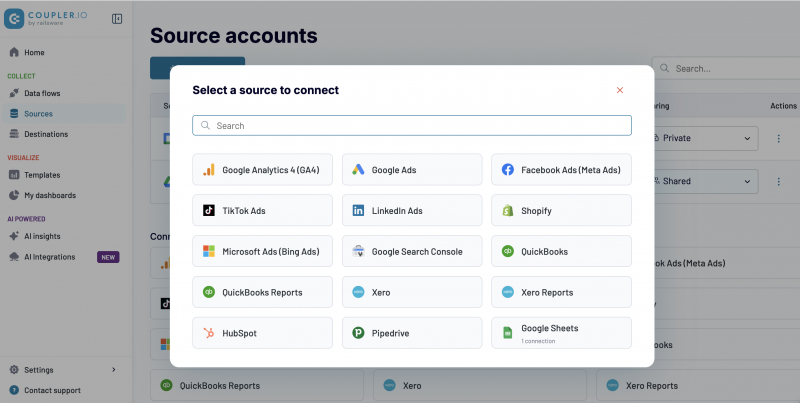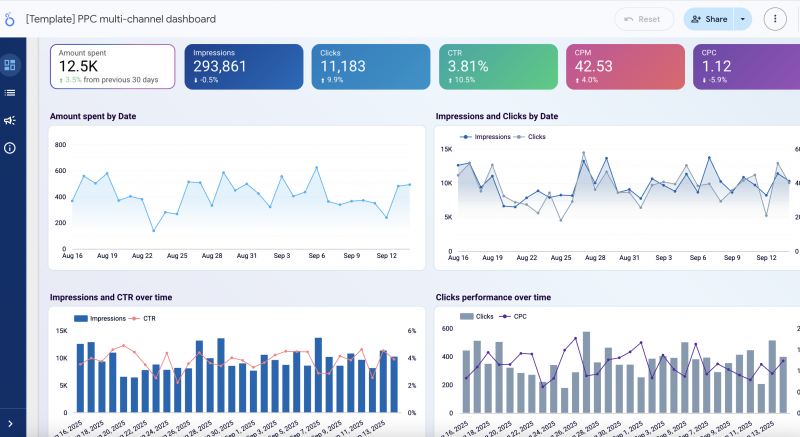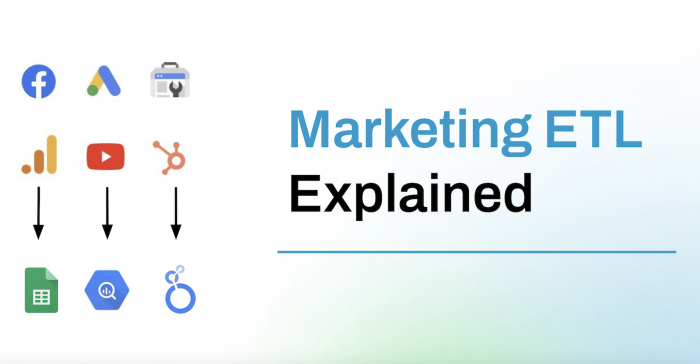The marketing tool stack grows, and teams need to work with extensive data flows. Marketing data is stored in different places and formats. Using the data for analysis and gaining insights from it becomes challenging.
The cycle of manual exports and data consolidation may remain never-ending unless the right solution is implemented. This is where ETL software comes in.
Let's understand how ETL fits into marketing, its benefits, and practical ways to implement it.
How ETL Helps Marketers
Marketers today rarely struggle with data shortages. The real issue is the opposite: too much data scattered across too many platforms.
Marketers need to check data in separate sources: campaign metrics in Google Ads, audience behavior in analytics tools, sales performance in a CRM, engagement on social media, etc.
Without a holistic approach, this data provides only fragments and may lead to the following:
Unstructured data that doesn’t fit together.
Delayed decision-making, since data is copied manually into spreadsheets.
Lack of real-time visibility makes it hard to react quickly.
At the core of marketing data management lies a simple need: collect and combine information into one reliable asset. Marketing ETL does exactly this. An ETL tool extracts data from multiple tools, transforms it into a consistent format, and loads it into a single spreadsheet, database, or dashboard.
Key Benefits of ETL for Marketing Data
ETL brings tangible advantages to marketing teams:
Saves time and resources: No more manual copy-pasting across sheets or tools.
Ensures accuracy: Automated processes reduce human errors.
Delivers fresh insights: Real-time or scheduled updates mean reports are always up to date.
Assists in strategic analysis: Multi-channel live streams of data give opportunities for better decision-making in marketing.
In brief, ETL eliminates the need to jump between platforms and gather data through manual exports. Marketers can now have their data flows automated, spending more time on analysis and optimization.
How to Implement ETL Solution in Your Marketing Flows
Integrating ETL into marketing operations is less about heavy engineering and more about planning. Here’s a practical path forward:
Audit your current tools and workflows to map out where your data is stored.
Match needs with ETL capabilities: choose one that covers your key apps.
Train your team to ensure efficient ETL features usage.
Look beyond basics: some ETL platforms include visualization, AI functionality, templates, etc.
One example of a marketing ETL tool is Coupler.io. It's a data integration and analytics platform that suits many teams with built-in connectors for 100+ marketing data sources. It's relatively easy to use, and it has critical extra features like a transformation module, in-app visualization and dashboard templates for Power BI, Looker Studio, Tableau, and AI-driven analytics features.

With the right setup and tool, ETL becomes part of your marketing flow rather than an extra task to maintain.
Marketing ETL Use Cases
ETL solutions open the door for marketers to new ways of working with data. A few examples where they prove invaluable:
Multi-channel marketing data collection
Modern marketers likely use several channels, and they need a complete performance picture. Combining metrics from digital advertising, SEO, email, and social media, matching it with CRM data, and adding customer behavior indications may be painful in a manual mode.
A reliable ETL solution can handle this task easily by automating your data pipelines. Arguably, it's one of the most common use cases of marketing ETL. It's especially useful for senior marketers since they have fresh data at their disposal in one place, be it a multi-channel Looker Studio dashboard or an auto-updated Excel file.
This way, you'll be able to immediately see which platform drives the best ROI, allocate budgets, experiment with growing channels, and much more – all this without days of manual reporting.
Dashboards for ad performance
When you run ads, you'll either periodically or simultaneously do it on several platforms, e.g., Facebook Ads, Google Ads, LinkedIn Ads, etc. Besides, the specifics of PPC and social media advertising require constant checking and optimizing campaigns.
ETL software connects ad platforms to visualization tools like Looker Studio, Tableau, Power BI, and others, refreshing data automatically. Instead of pulling numbers on Monday morning, you open the dashboard and know exactly how your campaigns are performing and what to do next.

SEO and traffic reporting
SEO data is rich in metrics: clicks, conversions, keyword rankings, page speed, and many other indicators. To evaluate and monitor SEO, any specialist would have to operate in several tools, from classics like Google Search Console or GA4 to special tools showing AI traffic impact or content management systems.
Imagine having organic search data in a no-fluff SEO report, in which you can understand the real revenue impact of SEO, not just traffic, or analyze how your content performs no matter the SERP updates, or quickly monitor the technical SEO of your website.
Marketing ETL will do it for you in the needed way – a filtered, auto-updated spreadsheet or a live dashboard in a BI tool. You'll be able to make your SEO efforts proactive and improve the results in this crucial, ever-changing marketing channel.
Marketing funnel analysis (ETL and AI)
Customer journeys rarely follow a straight line, attribution is complicated, so marketing funnels become substantially complex. While marketing ETL can streamline your data management, the data interpretation part of funnel analytics still needs attention.
Some ETL solutions, like already mentioned Coupler.io, can help with proactive funnel analysis through AI integrations. Simply put, you can bring your marketing data flows into AI agents like ChatGPT, Cursos, Claude, or others. With this approach, you can merge cross-channel data, identify patterns and anomalies, make summaries, and much more for funnel analytics and optimization.
Marketing ETL Recap
Marketing ETL is a must-have solution for managing data and improving analytics. It saves time, reduces errors, and makes real-time insights accessible.
For any marketing tool stack and strategy, ETL transforms marketing data from a burden into an asset. That's why marketing teams should consider implementing such a tool.
Post Comment
Be the first to post comment!





